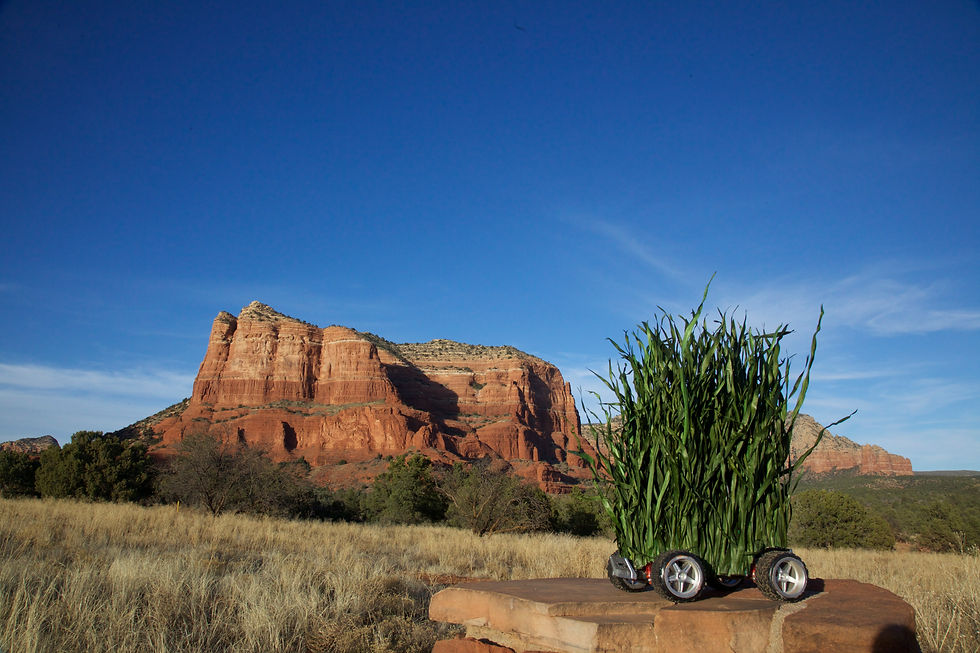







It is estimated that several hundred non-native organisms are now present within the Sonoran Desert bioregion. In fact, many are well established with the most severe causing ecosystem-level changes that are or are potentially irreversible. This past summer, PlantBot Genetics embarked on an important scientific expedition into the Sonoran Desert and surrounding areas of Arizona in search of unique host organisms for our branded genetic modifications -- our own El Dorado. PlantBot Genetics remains a leader in commercialized agriculture, industrial biotechnology, and related chemical inputs, and development of drought and heat resistant cultivars. Our patented GM techniques are continually being refined and have produced the following biological products of great promise to our shareholders and the bottom line
Saviolum Cacti - Wandering Aloe
Aquarius Echeveria
A cactus (plural: cacti) is a member of the plant family Cactaceae within the order Caryophyllales. The word "cactus" derives, through Latin, from the Ancient Greek κάκτος (kaktos), a name originally used for a spiny plant whose identity is not certain. Most cacti live in habitats subject to at least some drought and many live in extremely dry environments. Cacti show many adaptations to conserve water and the Saviolum Cactus or Kissy Kactus is no different. A genetic mutation led to a lack of thorns and a deep affection to pressing against one's lips to steal moisture and nutrients during high temperatures in the desert. Not much is known of this one specimen filmed in Arizona and research is ongoing.
Aeonium Wonderous
PlantBot Aeonium Wonderous is a version of Aeonium Arboreum a red succulent. No member of the crassulaceae family of plants is an important crop plant, except this one, which is watered with MDMA. Although this family of plants evolved over 100 - 60 million years ago, this PlantBot was created in our labs just last year. It will be harvested to use in drugs for anti-depresseants
Wandering Aloe
The Wandering Aloe's species name, "vulgivagus", means "wandering", and refers heart-rending habit of movement. Even where the climate does not permit A. vulgivagus to take root, it can spread rapidly from being transported by animals, humans and strong winds. The succulent stems break easily at the nodes and establish themselves wherever they land on dry soil. Each segment has the ability to regenerate, so it is able to make a rapid comeback, especially in soils where stems may remain underneath the surface. Hence as the song it sings suggests it doesn’t matter “who you are or where you are form”, it will attach itself to you for the love of the voyage.
Aquarius Echeveria
Cheveria is a large genus of flowering plants in the Crassulaceae family, native to semi-desert areas of Central America, from Mexico to northwestern South America. The genus is named after the 18th century Mexican botanical artist Atanasio Echeverría y Godoy.
Echeveria 'Aquarius' forms very attractive rosettes of ruffled silvery-blue leaves margined with rose to 8" or more in diameter. In habitat, many Echeverias grow on rocky outcroppings at sunny higher altitudes. PlantBot Genetics is interested in their polycarpic ability, meaning they may flower and set seed many times over the course of their lifetimes. This unique capacity to produce up to 300% more seed and Shake, Shake, Shake it over a wide area will allow exponential seed production and control over seed when embedded into future products. Our branded genetic engineering is a means to regulate and control patented seed. Control over seed is the first link in the food chain and when we control seed, we control life.
Prickly Holler
Found just west of Prescott, Arizona, the invasive Prickly Holler Succulent is of unknown origin with markers that prove a genetic match to a failed product line by INGENE Corp. The Prickly Holler Succulent is well adapted to survive unfavorably dateless spells caused by the delivery of repulsive pick-up lines to attract females. Although it is a rare event when females are drawn to such shameless self-confidence, a sparse white bell shaped flower stalk amply shouts from male succulents ensuring females take notice. After flowering, the male Holler dies back to underground storage organs that store newly developed pick up lines for next spring,
Centaurea cineraria
Centaurea cineraria is a perennial herb native to Italy and introduced to the American public by the national DIY home centers. The plant is characterized by having leaves and stems covered with a soft down that resembles silvery dust or soft grey fleece. The fuzzy, grey leaves glow in moonlight and when the temperature is high, the Centaurea cineraria will rock it roll it, stomp and even stroll it while hopping. This vigorous activity disperses seeds that readily take root and displace native vegetation. UPDATE: PlantBot Genetics will no longer comment on file #defr.875638-9-A.
